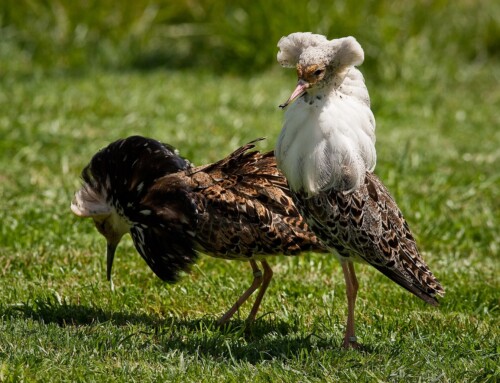Advancing ornithology through advancing understanding of natural history
LINKED PAPER
How much do we know about the breeding biology of bird species in the world? Xiao, H.T., Hu, Y.G., Lang, Z.D., Fang, B.H., Guo, W.B., Zhang, Q., Pan, X. & Lu, X. 2017. Journal of Avian Biology. DOI: 10.1111/jav.00934. VIEW
Being a Tibetan ornithologist, I have been making efforts to uncover the natural history of a variety of birds in the Tibetan Plateau, a challenging place to do field work (Fig. 1). As an evolutionary biologist, I have attempted to understand the mechanisms underlying the evolution of avian life history using comparative approaches across species (Zheng et al. 2017). However, I am usually disappointed when I try to compare life history strategies between Tibetan birds and their lowland counterparts in particular, and across the globe in general. My attempts are frequently limited by the failure to find the data in question for enough species to achieve the sample size needed. A few years ago, colleague Tom Martin of the University of Montana wrote to me and asked whether I was able to provide some published data on the clutch size of birds in south China, or whether I knew any people who work on the breeding biology of birds in that region. My answer was no.

Perhaps the stronger motivation for me to write this review paper is a longtime worry about the decline in natural history research around the world. I fear that the prevailing academic evaluation systems, valuing publications in high–impact factor journals, are responsible for leaving natural history out in the cold. While field-studies can be rigorous and time-consuming, there are few opportunities for publication in such journals. As a result, many ornithologists have turned their focus to molecular-based studies, despite the fact that the functions of genes must be understood through phenotypes — the units at the level at which eco-evolutionary dynamics arise (Lu 2015a). More importantly, our increasingly urban and digital lifestyle is eating away at young people’s enthusiasm for nature and their interest in studying life sciences in the wild.
It is necessary to specify what we known and what we do not known with respect to the information available on the breeding biology of birds in the world. This may help ornithologists to recognize which species, taxonomic groups, geographical regions and habitats are in great need for natural history research. So, in our recent paper, we reviewed the current state of knowledge on the breeding biology of birds of the world, through resources like The Handbook of the Birds of the World and peer-reviewed publications, in order to highlight the knowledge gaps. Given that such knowledge is fundamentally important for the advancement of ornithology, but poorly available for most species, we encourage ornithologists to work towards filling these gaps.
I wish more ornithologists, especially young people, choose to go the field. Especially in those areas where most species remain mysterious with respect to their natural history. I am sure that field ornithologists will be rewarded, both scientifically, through novel findings, but also in terms of well-being, through improved life perceptions (Lu 2015b).
Read Xin Lu’s earlier blog on Tibetan Ground Tits: What more can helpers give?
References and further reading
Lu, X. & Zheng, G.M. 2003. Reproductive ecology of Tibetan Eared Pheasant Crossoptilon harmani in shrub environment, with special reference to the effect of food. IBIS 145: 657−666. VIEW
Lu, X. 2015a. Hot genome leaves natural histories cold. Science 349: 1064. VIEW
Lu, X. 2015b. The rewards of roughing it. Science 350: 350. VIEW
Zhang, G.Y., Zhao, Q.T., Møller, A.P., Komdeur, J. & Lu, X. 2017. Climate predicts which sex acts as helpers among cooperatively breeding bird species. Biol. Lett. 13: 20160863. VIEW
Image credit
Featured image: Tibetan Eared Pheasant Crossoptilon harmani © Xin Lu
If you want to write about your research in #theBOUblog, then please see here.





